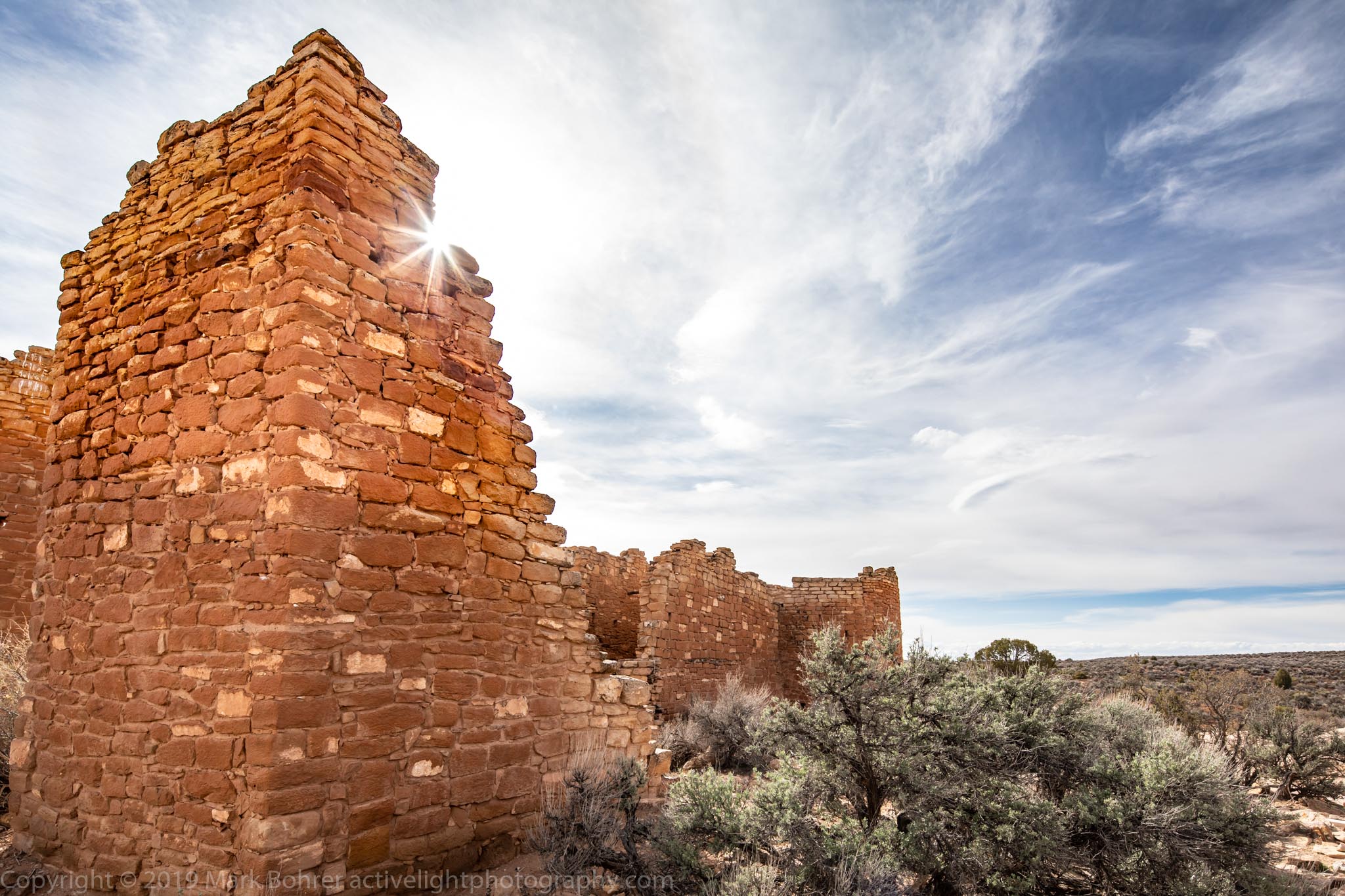 Hovenweep Castle and diffraction sunstar Hunter-Gatherers – Long before it became the quiet deserted valley of the Utes, hunter-gatherers roamed through Hovenweep in search of now-extinct mastadons and other game. They gathered edible plants when they could, but gave no thought to planting anything and settling down. Pithouses and Farming Finally, as the mastadons, mammoths and giant sloths disappeared from overhunting and / or climate change, some smart person figured out they could grow edible plants in one spot and eat on a regular basis without constantly moving. Corn, beans and squash became their staple crops. They didn’t have the science to prove it, but these three crops together provide all 9 essential amino acids, protein, vitamins and minerals needed for survival. ADVERTISEMENT If you’re looking for an unusual photo adventure most people don’t ever get to do, check out a photo tour from Active Light Photography. I’ll guide you to the best photo sites in the Southwest, giving you their background so you can tell your best photo story. Contact me at the link for more information, or call me at (408) 483-3782. ************* Archaic-period hunter-gatherers became what we now call (Late) Basketmaker II people, moving into pithouses near fields and water. Their settlements date from around AD 50. To make a pithouse, you dig a hole and built an open wood shelter above it. But since you were heating and cooking with fire, you had a problem. Most pithouses burned down. 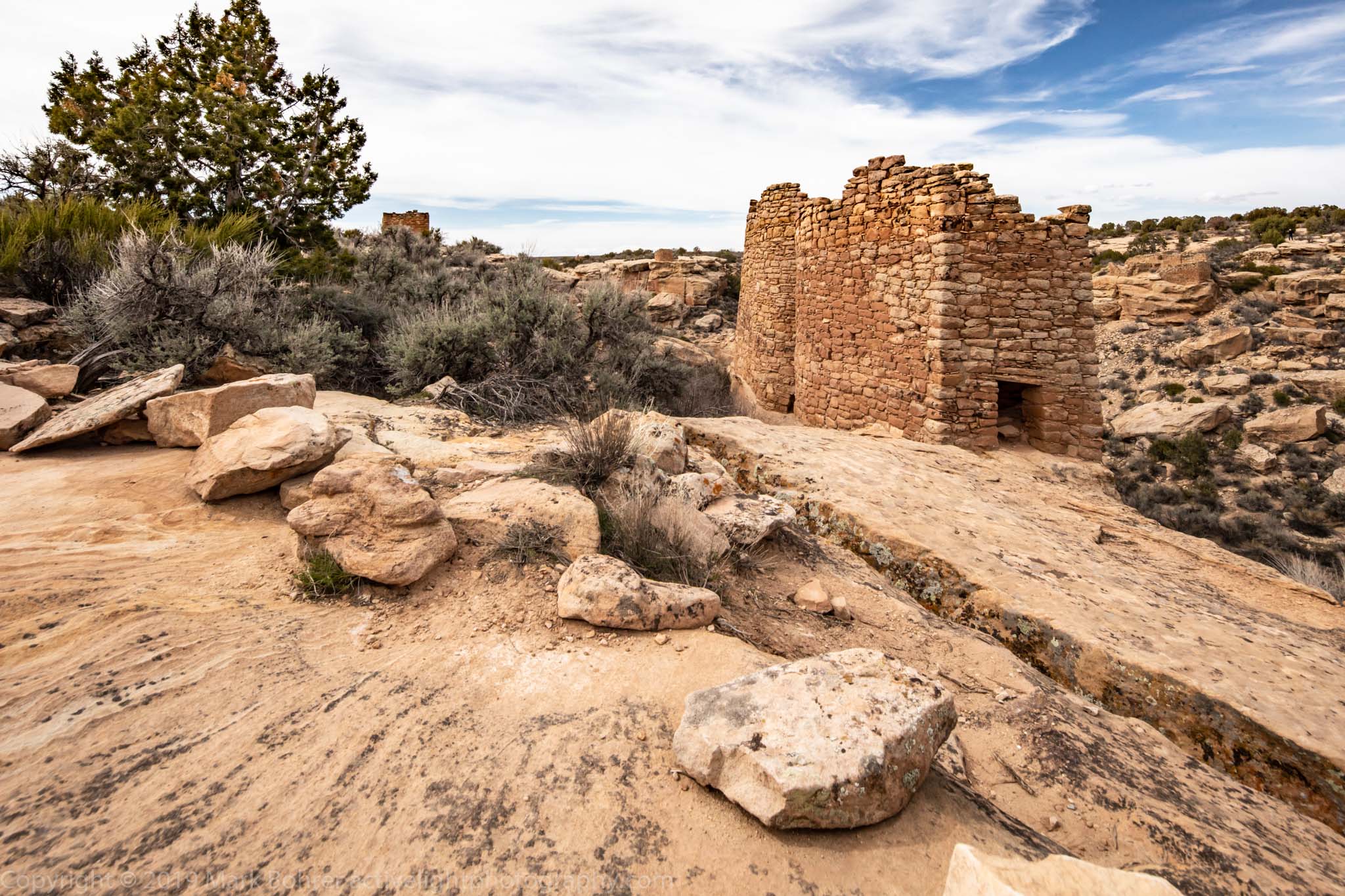 Pointing to Twin Towers These structures aren’t actually twins – one is square, the other oval. Stone Pueblos Likely in response to pithouse fires, and as their agricultural expertise with the need for fixed settlement grew, Ancestral Puebloans began building stone houses above ground. This was characteristic of the Basketmaker III period, AD 400-700. There was a shift of activities from the communal pithouse to these new stone houses with walled rooms. Pithouses possibly evolved into dug-out stone-lined round rooms archaeologists called kivas. They were probably used for ceremonial or ritual activities. We’re not sure – these people left no written language. Ancestral Puebloans (Anasazi) began building larger multi-story stone structures and matching bigger stone-lined round rooms (Great Kivas) during the Pueblo I period that followed (700-900). The Chacoan Anasazi started the 13 Great House Pueblos at Chaco Canyon during this period. 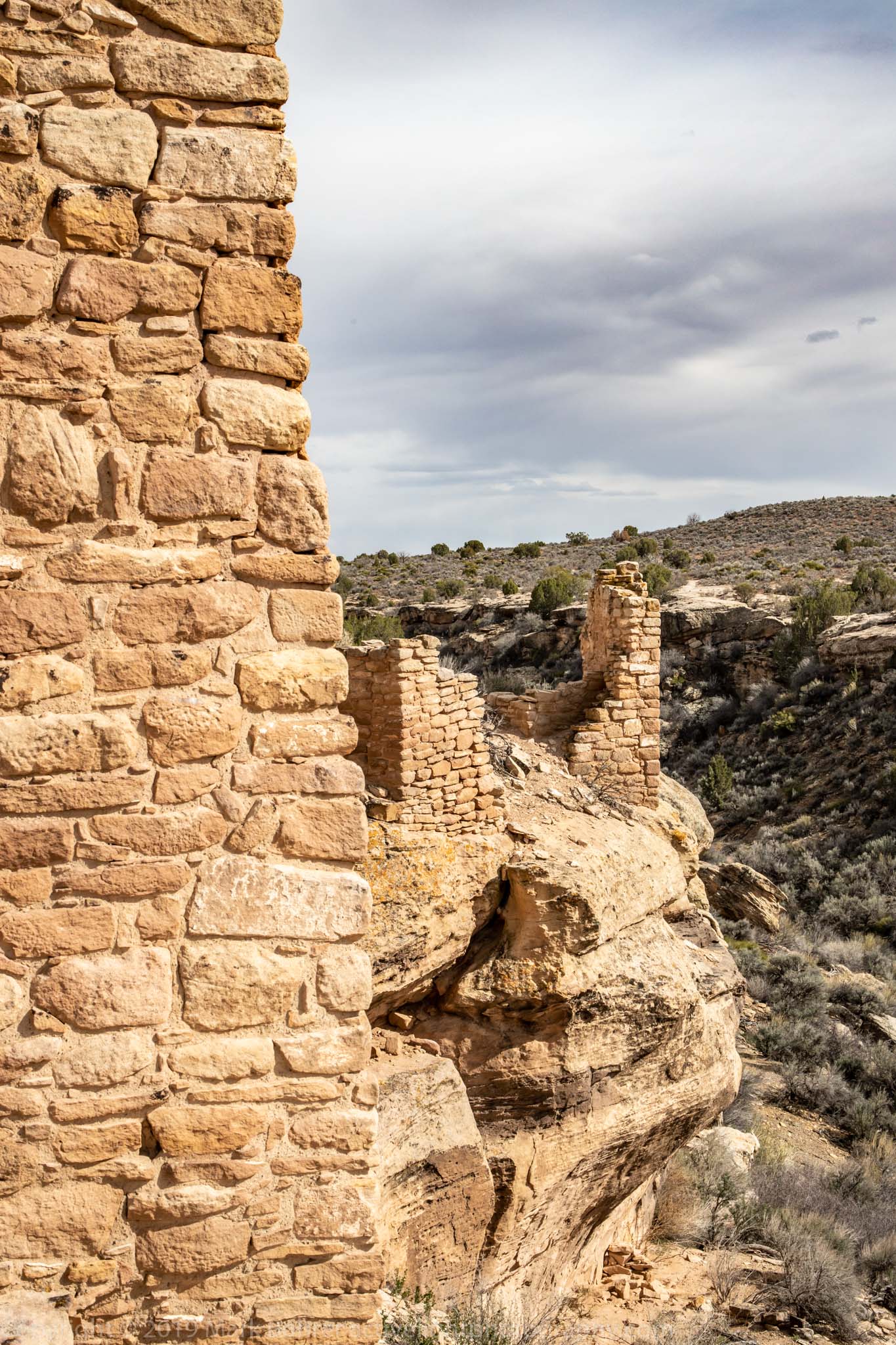 Building on a ledge – Hovenweep Castle 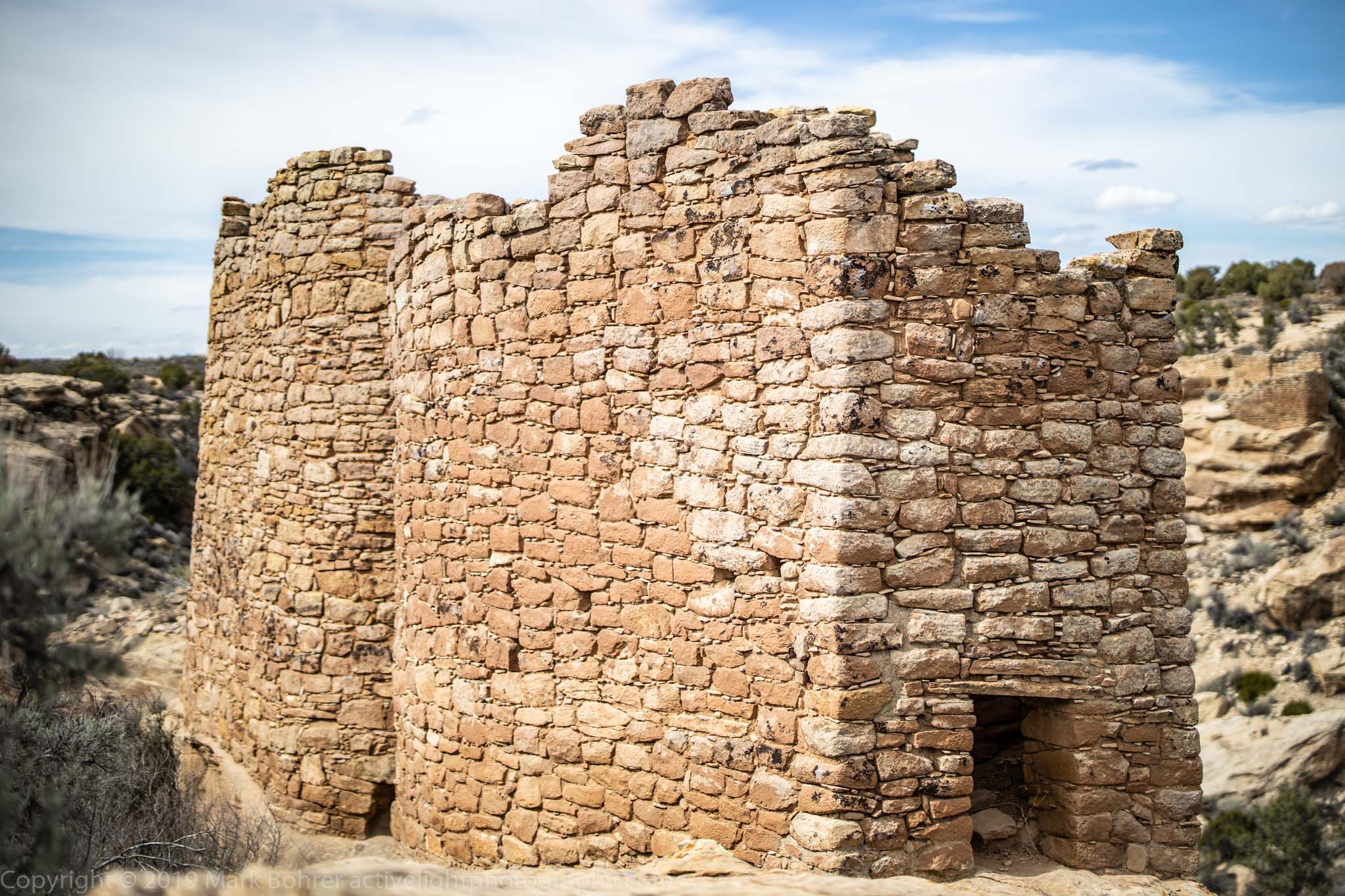 Ground level entrance – Twin Towers Construction at Hovenweep dates from 1166 to 1277, according to dendrochronological analysis (tree ring dating). This falls in the Pueblo III period, when the Chacoan system was breaking down and evidence of warfare appears across the Southwest. Yet Hovenweep’s structures don’t look like they were built to withstand attack or raiding with their ground-level entrances, unlike Mesa Verde’s Balcony House and other cliff structures from around the same time frame. 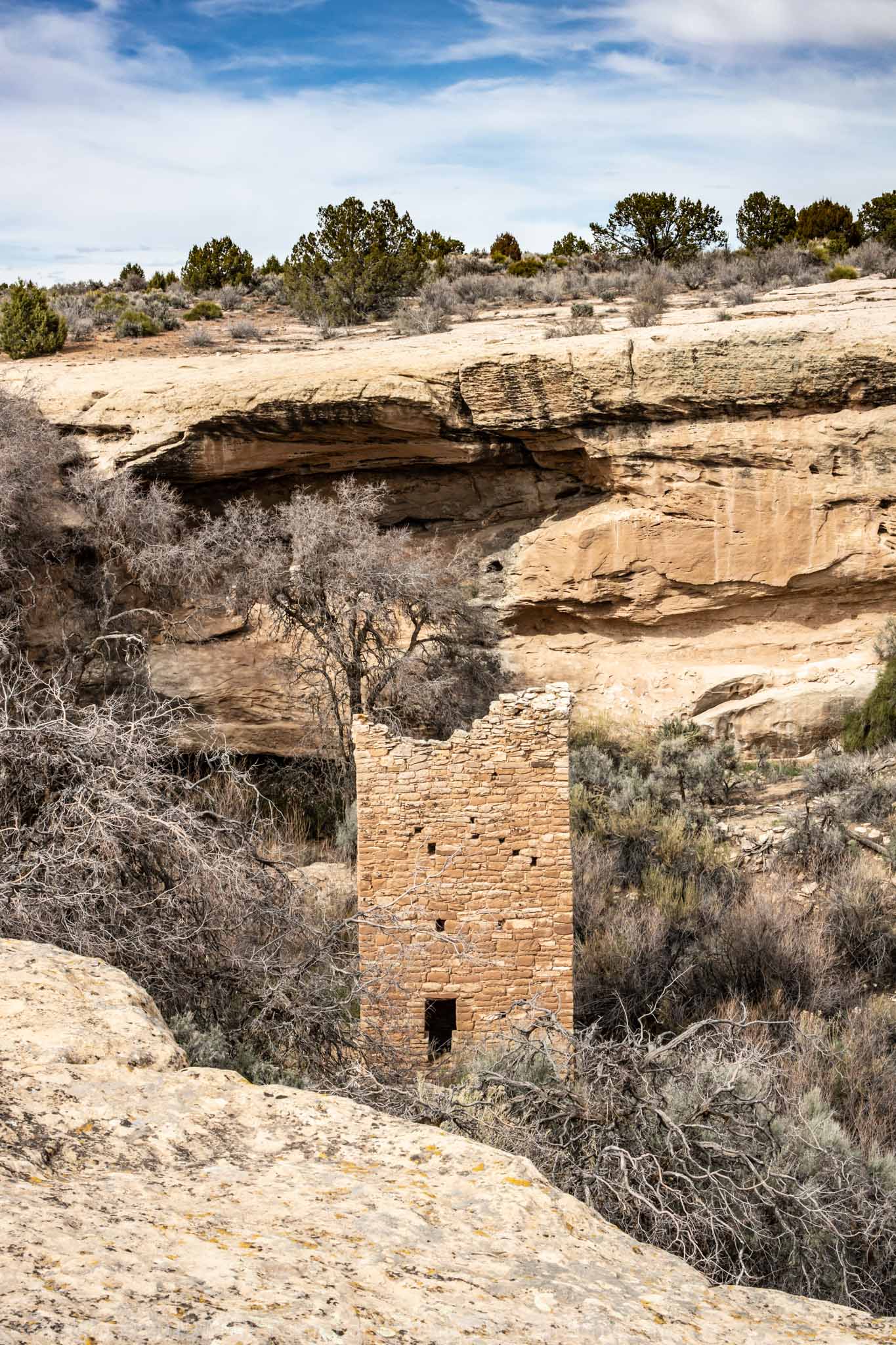 Square Tower House with T-door – note granary under an alcove in the background We don’t know what T-doors signified. To this day, Hopi descendants won’t discuss it. Finally a Visit Whatever the reason for their construction, the ruins of Hovenweep’s precise masonry still stand to either side of a narrow canyon along today’s Colorado-Utah border. I’d always wanted to see more of the literally hundereds of ruin sites in the Four Corners area, and we kept driving by signs for Hovenweep on the way elsewhere. This time, we blocked out a trip and visited during my April birthday. 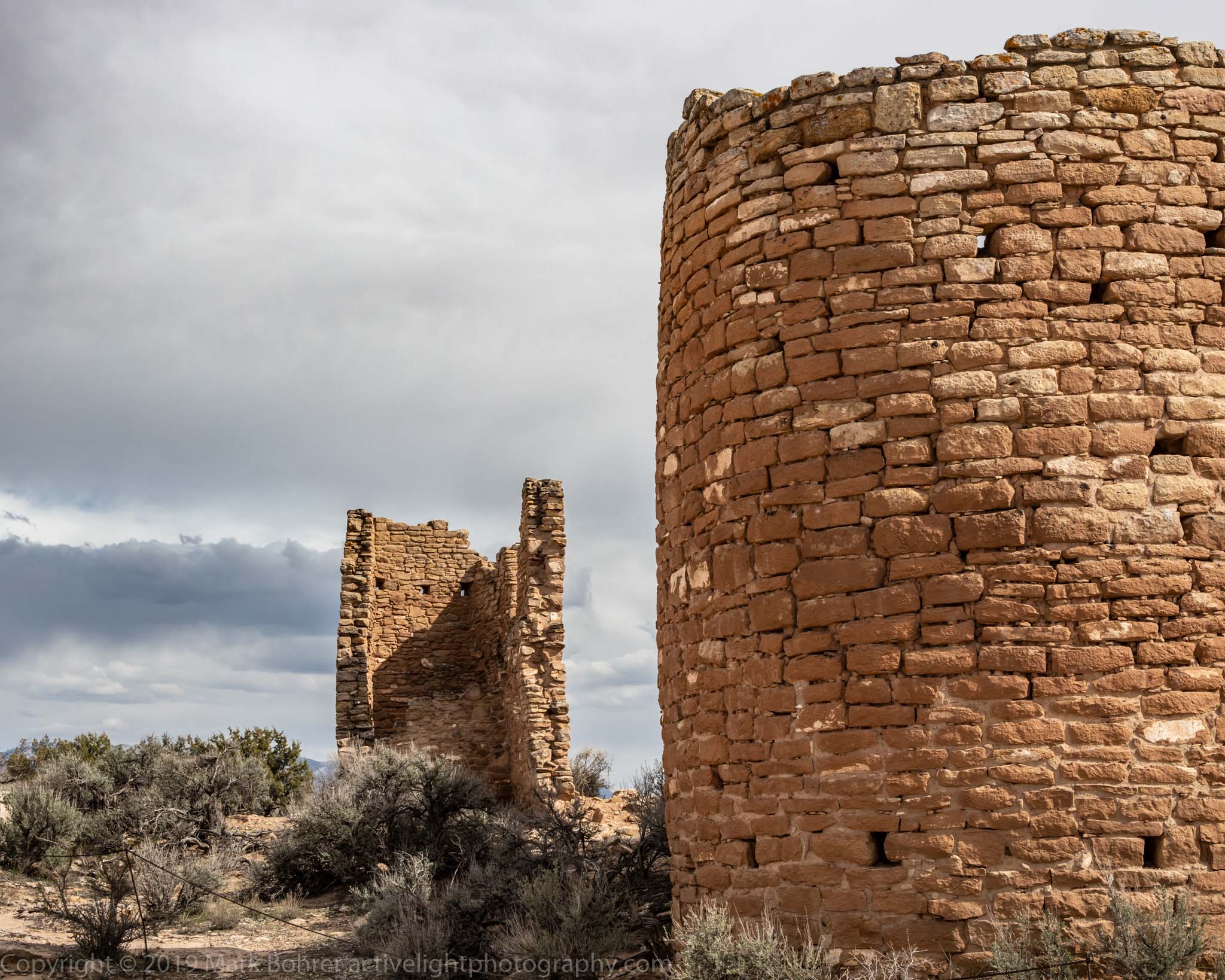 Hovenweep Castle – east side The route from Dolores, Colorado to Hovenweep is all paved roads today, easily accessible by car, but it used to be a very bumpy drive on dirt roads. Temperatures during our April visit were pleasant, but they can exceed 100 degrees F during the summer months. We hiked from the Visitor Center on the east side across Little Ruin canyon and up to the west side. 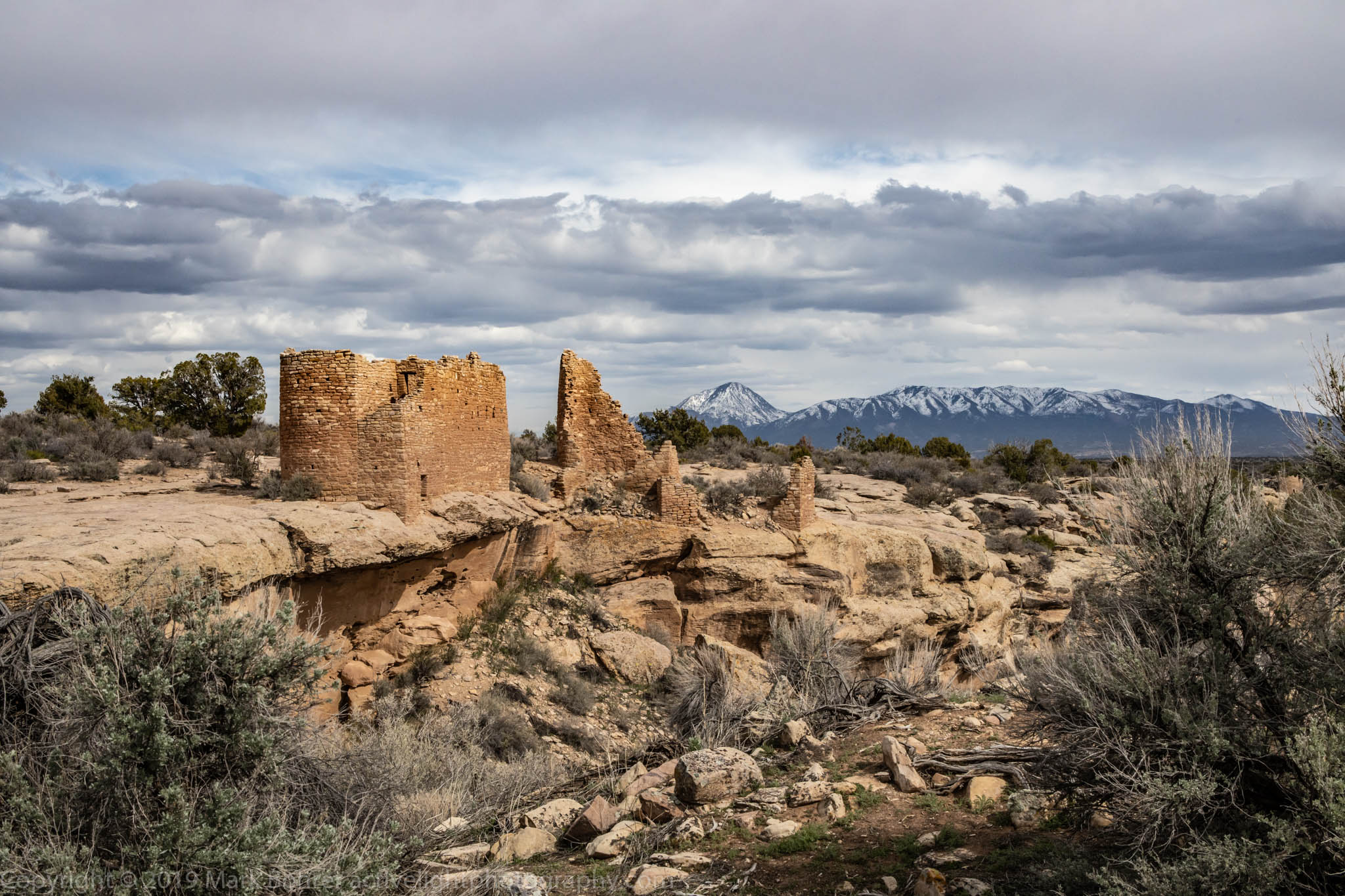 Hovenweep Castle and Sleeping Ute Mountain As I photographed Square Tower and other ruins, I had to believe the original residents chose their building sites both for water availability and soil, and for the great views of Sleeping Ute and other mountains. I certainly appreciated the severe beauty of the landscape. We re-crossed the canyon to visit the ruins on the east side. 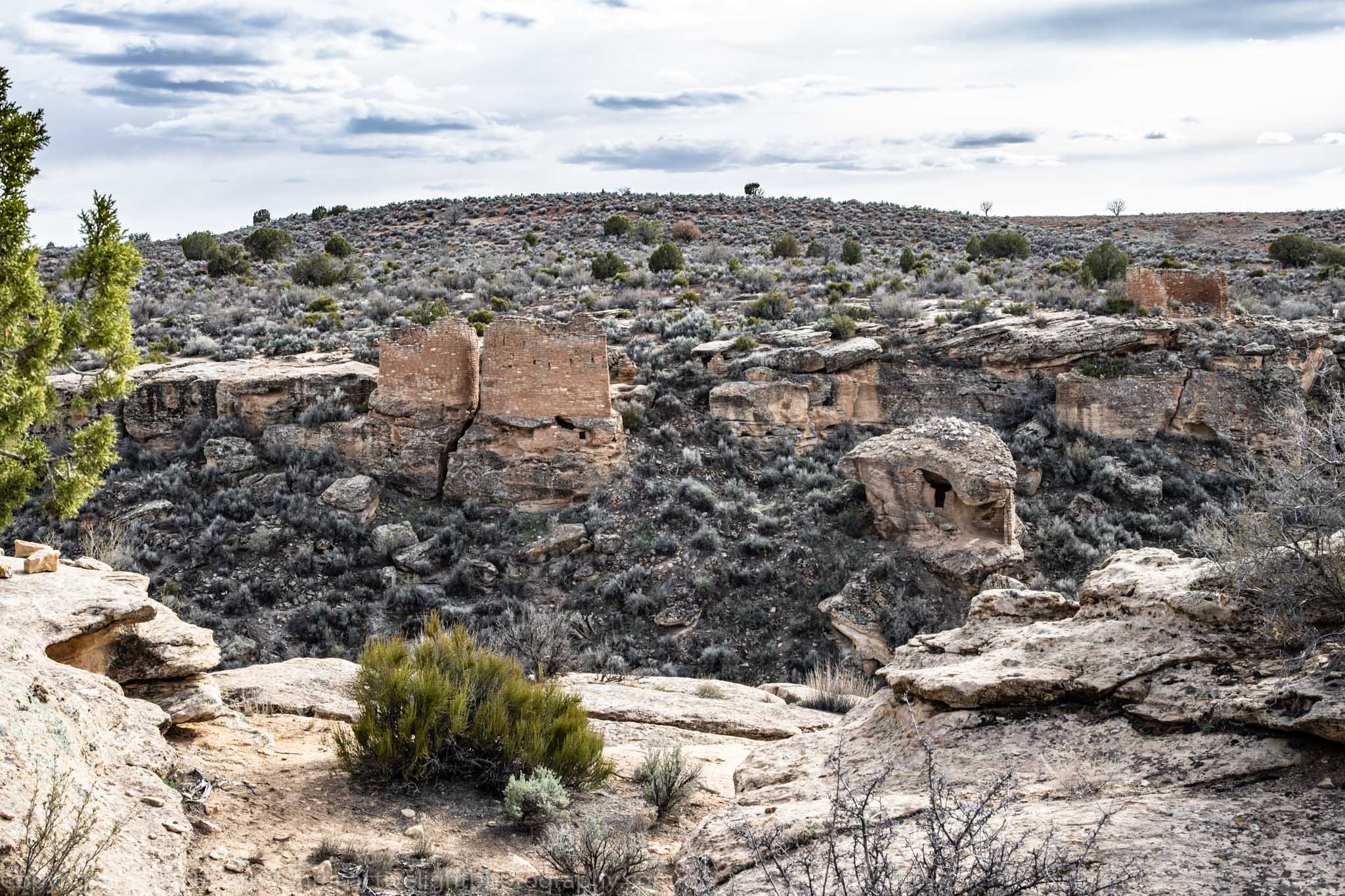 Twin Towers and House in the Rock from the east side The hike down and back up the canyon was pretty easy – elevation loss and gain are less than 200 feet, and the trail is easy to walk. We saw no more than 10 other people on the early April afternoon we were there. We RV-camped in Hovenweep’s campground, celebrating my birthday with water and leftover turkey. I didn’t care, it had been a great day. The campground is first come, first served (no reservations possible), so arrive early to snag one of the 5 or so sites with RV hookups. And the best part (besides the ruins)? This is a rare NPS-administered National Monument allowing dogs on trails. That’s another reason to go in April when temperatures are lower. Stop Buildings Falling Over – Perspective Correction and Tilt-Shift Lenses Knowing I was going to photograph ruins, I brought my 17mm f/4L TS-E – a tilt-shift lens. By shifting the lens up relative to the camera sensor, I can photograph tall structures without tilting the camera back. When you tilt the camera to fit everything in, trees and buildings look like they’re falling over or tapering to the top. Ansel Adams, Edward Weston, Elliot Porter and other 20th Century photographers used view camera lens shifts for just this purpose. A lens shift does this perspective correction in the camera, without the resolution loss you get if you do it after-the-fact in Lightroom. 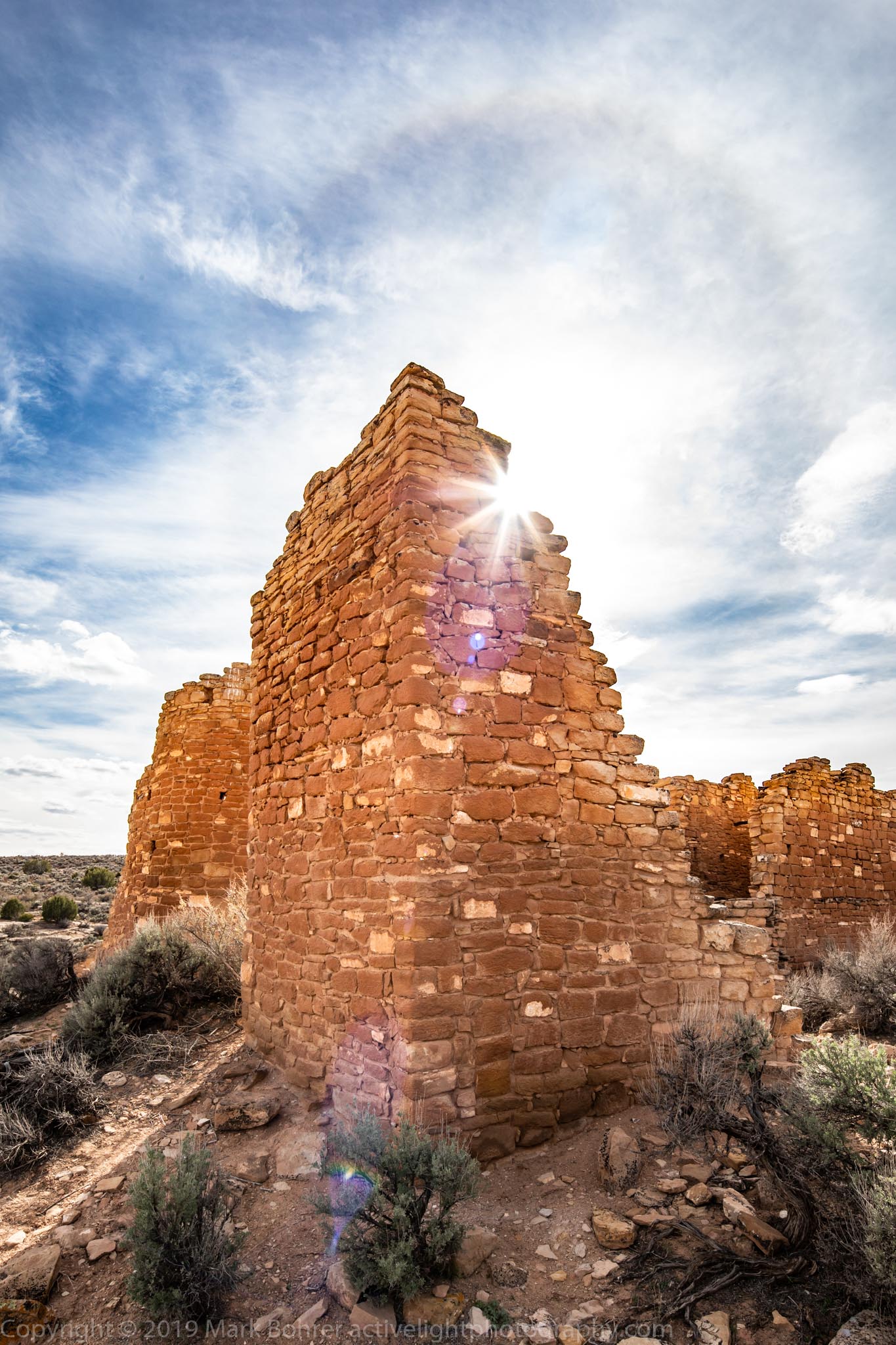 Diffraction sunstar and cloud spectre, Hovenweep Castle I spent a long time shooting diffraction sunstars around Hovenweep Castle. The sun’s rays will diffract into a star around any sharp edge on a tree branch or masonry wall. They’ll also do this as they pass through a lens small aperture. I’ll routinely look for sunstars in landscapes, stopping down to a smaller lens aperture if necessary to get them – usually f/8 or smaller. More Information – Ancient History Encyclopedia (12 September 2018) Hovenweep. Retrieved from https://www.ancient.eu/Hovenweep/ – Crow Canyon Archaeological Center (nd) Pecos Classification. Retrieved from https://www.crowcanyon.org/index.php/pecos-classification – Live Science (August 15, 2015) 10 Extinct Giants That Once Roamed North America. Retrieved from – National Park Foundation (March 7, 2016) Modern Mysteries: The Prehistoric Towers of Hovenweep National Monument. Retrieved from https://tinyurl.com/yxmtpus3 – National Park Service (nd) Hovenweep National Monument – History & Culture. Retrieved from https://www.nps.gov/hove/learn/historyculture/index.htm – Mesa Verde Museum Association (nd) Balcony House. Retrieved from https://www.mesaverde.org/files/uploaded-images/2013BalconyHs_English.pdf – PetaPixel (April 8, 2015) A Quick Introduction to SHooting with a Tilt-Shift Lens. Rettrieved from https://tinyurl.com/y338nwy3 – Wikipedia (nd) Three Sisters (Agriculture). Retrieved from https://en.wikipedia.org/wiki/Three_Sisters_(agriculture) – Wikipedia (nd) Hovenweep National Monument. Retrieved from https://en.wikipedia.org/wiki/Hovenweep_National_Monument – Joseph C. Winter (1975) Hovenweep 1975 – Archaeological Report No. 2. Retrieved from http://npshistory.com/publications/hove/hovenweep-1975.pdf |
(408) 483-3782
Curious about how to shoot ruins?(408) 483-3782

Recent Comments